By C. Elkins, OK Math and Reading Lady
Are you looking for a place to find great quality FREE online stories / books that fit your child’s or students’ reading levels?  What about instructional math videos just right for explaining math concepts, and virtual math manipulatives (especially if students don’t have any at home)? I have 4 I highly recommend and will highlight below.
What about instructional math videos just right for explaining math concepts, and virtual math manipulatives (especially if students don’t have any at home)? I have 4 I highly recommend and will highlight below.
- https://www.readworks.org/ Readworks.org is a very high quality non-profit site which can be used with individual children or the whole class. You will find articles, ebooks, and a library. Search by grade level, lexile level, genre, skill, etc. Most articles have an audio function and can be presented digitally or printed. The text selections really help build background knowledge that a lot of students are missing. Be sure to check out their “Article a Day” program. As a teacher or parent, you can create a class and make assignments. Comprehension questions and free response questions are included. ALL of it is FREE. They have webinars available to learn about all of the features. Well worth your time!
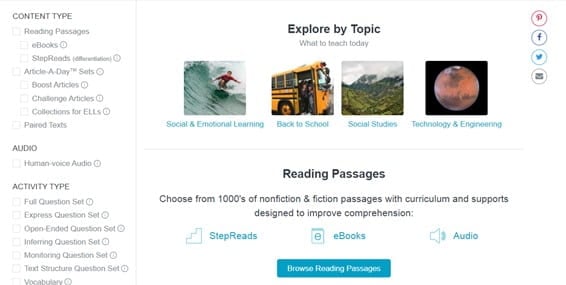
- https://www.wilbooks.com/wilbooks-free-resources If you are looking for leveled books for PreK-3rd grade students, then Wilbooks may definitely meet your needs. There is a good selection of fiction and non-fiction leveled by grade level or guided reading levels A-M. Levels A and B have around 30 titles each. Not all of the levels have that many, as it varies. The back cover of each book tells the grade level, guided reading level and word count in case you want to do a running record. If you want access to their entire collection, the price is VERY reasonable. I haven’t purchased it myself YET, but it states $1.99 for a monthly individual account. I have been using these books and the students like them!

- https://learnzillion.com/p/ This is a really good site for math instructional videos and lessons. Learn Zillion used to be totally free, but like others you now have to purchase a subscription to get everything they have to offer. BUT, by creating a free account you still get access to about 1000 videos. You can search by grade level, standard, key word, etc. The instructional videos are done very well and are easy to follow (at least the one’s I have viewed). And they are short and concise. These would be great to use with a zoom lesson in your class or as a parent who is searching for the right way to explain a strategy. The objectives are clearly stated, videos are often also available in a slide format so you can explain it yourself, and you have the option to make assignments as well.
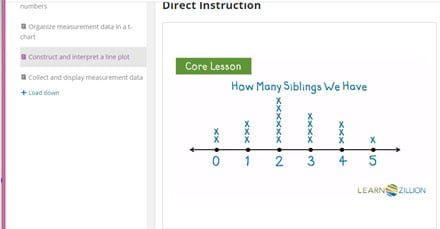
- https://www.mathlearningcenter.org/resources/apps I cannot speak highly enough about this FREE site. Math Learning Center apps cover just about any manipulative you need, but don’t have physical access to: base ten, pattern blocks, coins, clocks, ten frames, geoboards / area grids, number lines, Rekenrek counters, etc. These are interactive and can be used as a website or app. The directions are clear (look for the little “i” in the corner of each screen). These are FUN to use! Here is a link for more information about this great resource that I posted last year: Virtual Math Manipulatives
So there you have it, 4 great websites well worth your investigation!! Do you have some to recommend? Just respond by clicking the little speech bubble.
P.S. If you are interested in any of the following to meet your professional or personal needs, please go to the bottom of my “About Me” page for more details (black bar at top of this blog).
- Professional devlopment – private, job-embedded, workshop, or webinar
- Working as an online tutor
- Referring a student for online tutoring
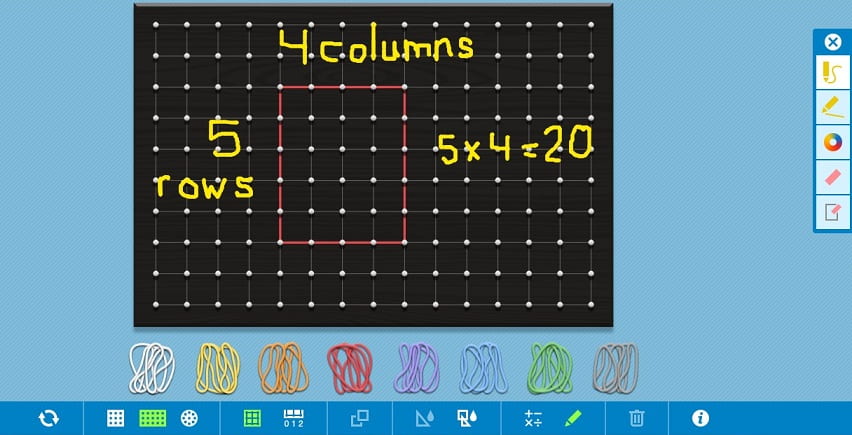



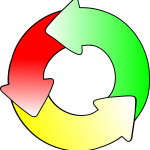

 This week I will focus on one I refer to as the Flexible System. After reading this article, you should see why I gave it that name. Many of the points I made in the previous post about Organization, Management, and Behavior still apply to this Flexible System. I know several teachers who switched to this system and absolutely love it. Read on . . .
This week I will focus on one I refer to as the Flexible System. After reading this article, you should see why I gave it that name. Many of the points I made in the previous post about Organization, Management, and Behavior still apply to this Flexible System. I know several teachers who switched to this system and absolutely love it. Read on . . .
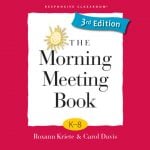 It promotes ways to create a classroom community by having a daily “Morning Meeting.” We formed a circle every morning and greeted each other by name in fun ways. Through this circle, we shared successes and concerns for one another, began discussion topics about how we should behave and respect one another, welcomed new students, made group decisions, and set the tone for the day. Every student was acknowledged and felt valued every day. Students don’t want to disappoint a teacher or classmate they respect, and it almost eliminated the need for time consuming behavior charts.
It promotes ways to create a classroom community by having a daily “Morning Meeting.” We formed a circle every morning and greeted each other by name in fun ways. Through this circle, we shared successes and concerns for one another, began discussion topics about how we should behave and respect one another, welcomed new students, made group decisions, and set the tone for the day. Every student was acknowledged and felt valued every day. Students don’t want to disappoint a teacher or classmate they respect, and it almost eliminated the need for time consuming behavior charts.